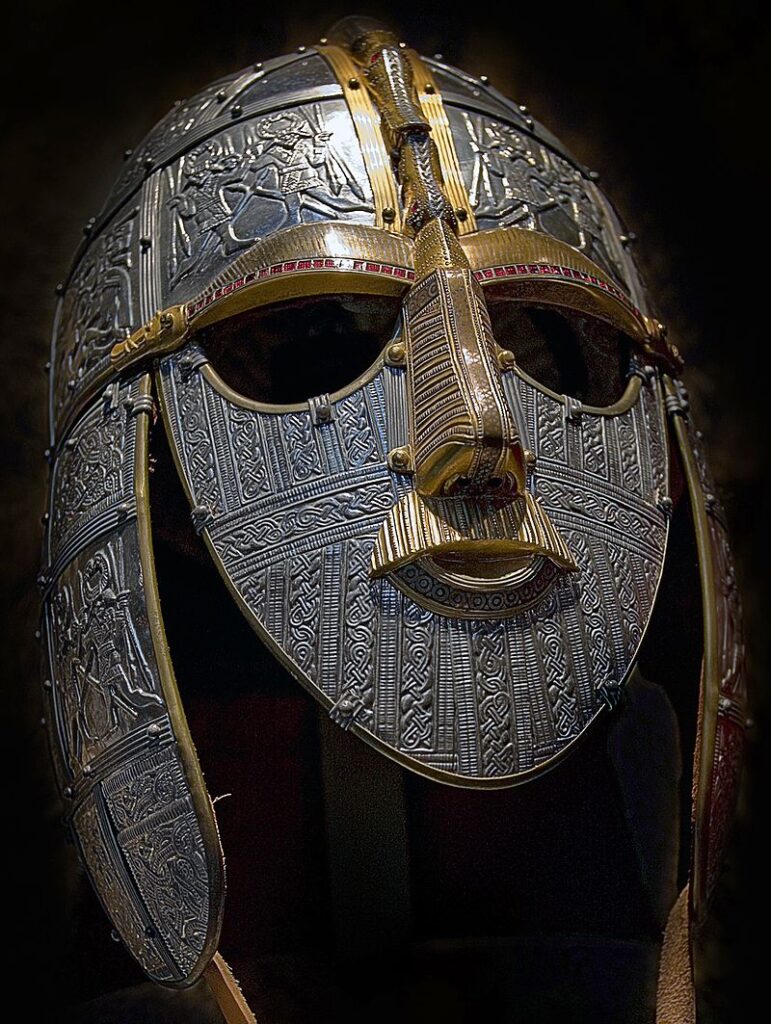Sutton Hoo

Sutton Hoo, one of the most significant archaeological sites in England, offers a fascinating glimpse into Anglo-Saxon society during the early 7th century. Discovered in 1939 near Woodbridge in Suffolk, the site is famous for its burial mounds, particularly the ship burial that is believed to be the final resting place of an East Anglian king, possibly Rædwald.
The Sutton Hoo burial mound, which contained an entire ship, is remarkable for its wealth of grave goods, including weapons, armor, and intricate gold and garnet jewelry. These artifacts highlight the sophistication and wealth of the Anglo-Saxon elite. The burial itself is pagan in nature, reflecting the religious practices before the widespread conversion to Christianity in England. However, it also exists in a period of religious transition, where Christian and pagan beliefs coexisted and influenced each other.
Anglo-Saxon Christianity began to take root in the 6th and 7th centuries, significantly influenced by missionaries like Augustine of Canterbury, sent by Pope Gregory the Great in 597. The conversion process was gradual and complex, often blending Christian practices with existing pagan traditions. For instance, Christian symbols such as crosses began appearing alongside traditional Anglo-Saxon motifs in art and jewelry, reflecting this syncretism.
The Sutton Hoo ship burial is a snapshot of this transitional period. The presence of objects such as the ceremonial helmet, shield, and the intricate gold belt buckle suggests a society deeply entrenched in warrior culture and pagan traditions. However, there are also hints of Christian influence. The burial mound itself may be an attempt to honor a king in a way that bridges old and new beliefs, as it lacks overt Christian symbols but occurs during a time when Christianity was beginning to spread in East Anglia.
Rædwald, the potential occupant of the Sutton Hoo ship, is known from historical sources like Bede’s Ecclesiastical History of the English People. Bede describes Rædwald as a king who was baptized but continued to worship pagan gods alongside the Christian God, epitomizing the dual religious practices of the era.
Sutton Hoo provides a vivid image of the cultural and religious dynamism of early Anglo-Saxon England. It marks a time when the old pagan traditions were slowly being supplanted by Christianity, a process that would eventually lead to the Christianization of the entire Anglo-Saxon world, fundamentally altering its social and religious landscape.
